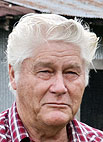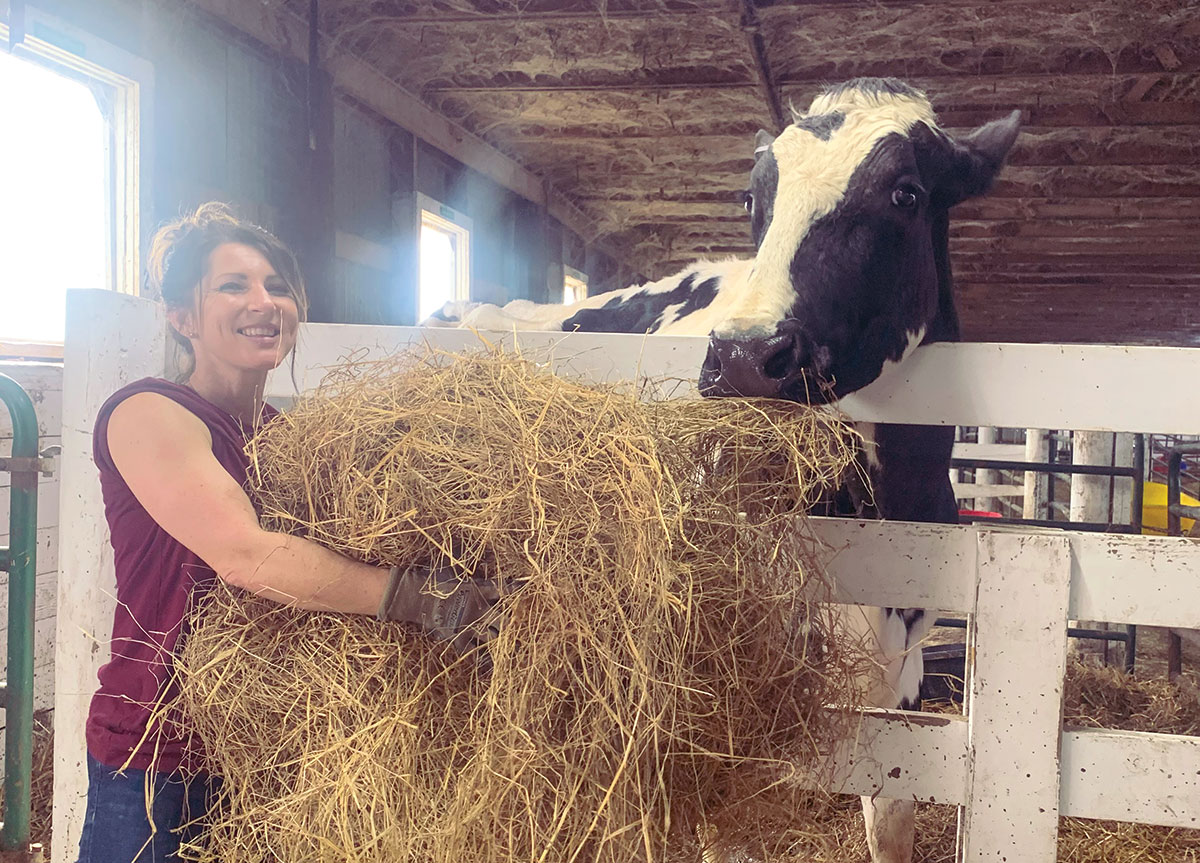
For Bill Berg and his family, who’s farm lies just southwest of Exeter, Mo., raising hogs has been part of their lives for many years. “I was raised here. My parents moved here from Pratt County, Kansas and bought 120 acres.” Bill shared that his dad raised hogs and butchered them as well. Bill’s own childhood memories of having pigs on the farm were also echoed in the next two generations. His daughter, Bridget Schreiner, second youngest of four daughters that Bill and Barbara Berg have, recalled late summer nights of sitting near the sows waiting for baby pigs to be born. Bills 18-year-old grandson, Jesse Hinds, who is the son of daughter Becky, has enjoyed helping his grandpa with the pigs since he was a toddler.
Bill, who is also a truck-driver, keeps approximately 10 sows all the time. Bill and Jesse work together to take care of the feeding and maintenance of the herd of sows. He primarily runs a mixture of Hampshire and Yorkshires. Sows are kept in a large pen with the boar until they are close to pigging. The sow is then moved to a smaller sow-pen in a barn where she makes a nest and has her litter of piglets.
Pig health is part of the routine for the sows. “I usually deworm the sows when I take the pigs off and then again when I bring her to the sow-pen before she pigs. I also deworm all the piglets and cut the males at weaning.” Another aspect of sow health is only letting them have 2 litters a year. “A sow will breed back within three days of having pigs if she is with the boar.”
As far as herd maintenance, Bill has a turnover of about three to four years with sows and boars. He keeps his own sows and looks for an abundance of teats when choosing replacement sows. “The more teats they have, the more piglets they can take care of.” Bill also waits for a sow to get nearly a year old before breeding, and culls any new sows that don’t do a good job of feeding and taking care of her litter. When purchasing a boar, Bill looks for a long body with good structure, “The longer the body the better. More length means more chops.”
Finding a market, even after the bottom dropped out of the hog market years ago, has not been a problem for Bill. He makes the majority of his stock sells to individuals. He will sell weaned piglets, but gains most of his market with the sale of 150 pound pigs.
Growing grain is another important aspect of his operation. “I try to grow about 6,000 bushels of corn,” Bill said, and also grows a crop of milo. “At the feed mill I buy distillers grain, vitamins and calcium to mix with the milo and corn.” He has also used gluten pellets and likes to maintain a 12 percent protein for his sow’s ration, and 14 percent for the fat hogs, which he feeds once daily.
Bill has constructed large pens that are completely surrounded with welded-wire hog panels. He also has the perimeter surrounded with a single hotwire placed about 1 foot above the ground. The pens also surround ponds that provide the pigs with a permanent wallow area.
Jesse is optimistic about the future of hog farming, and wants to follow in Bill’s footsteps, “I want to be a truck-driver, too.”







